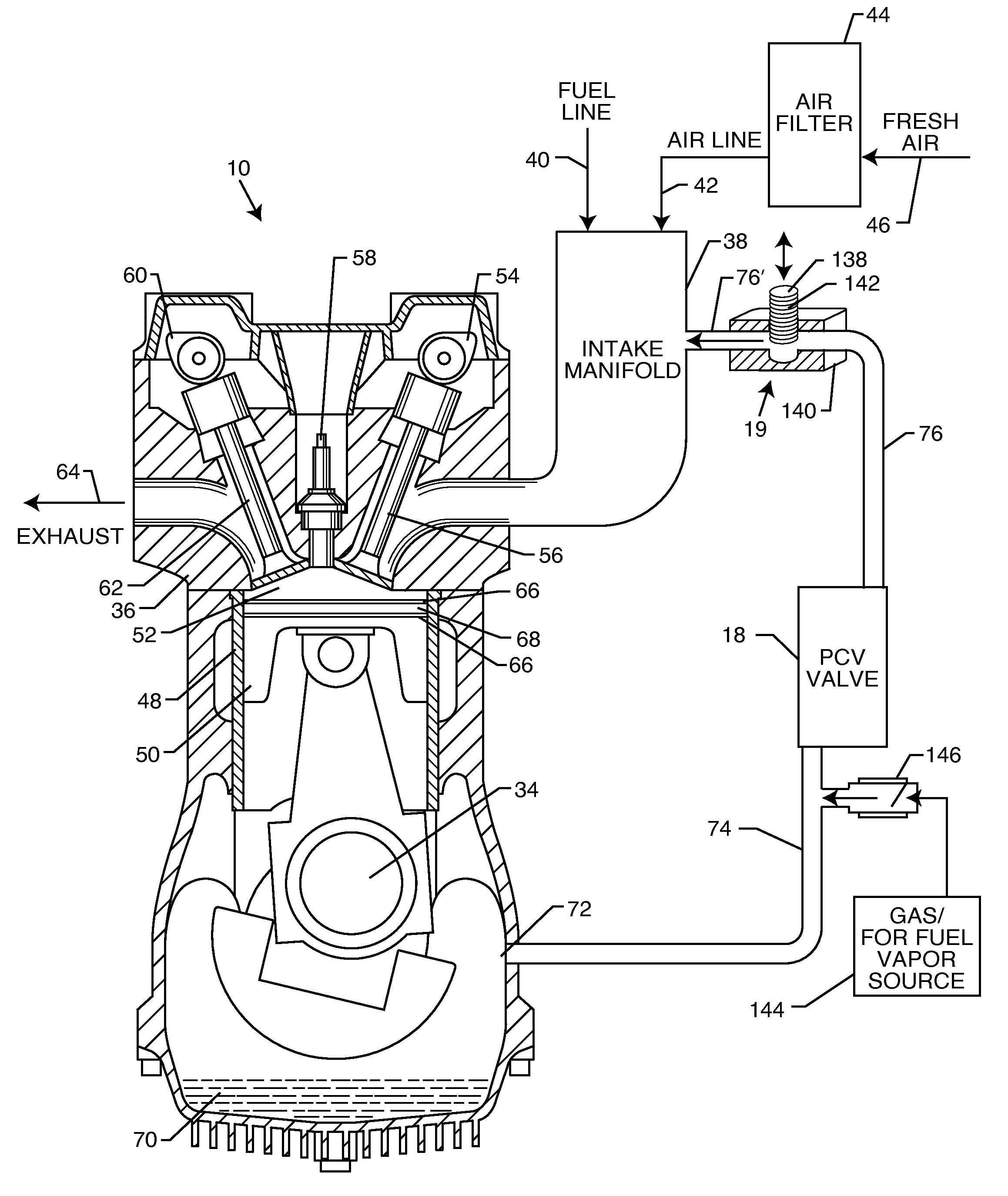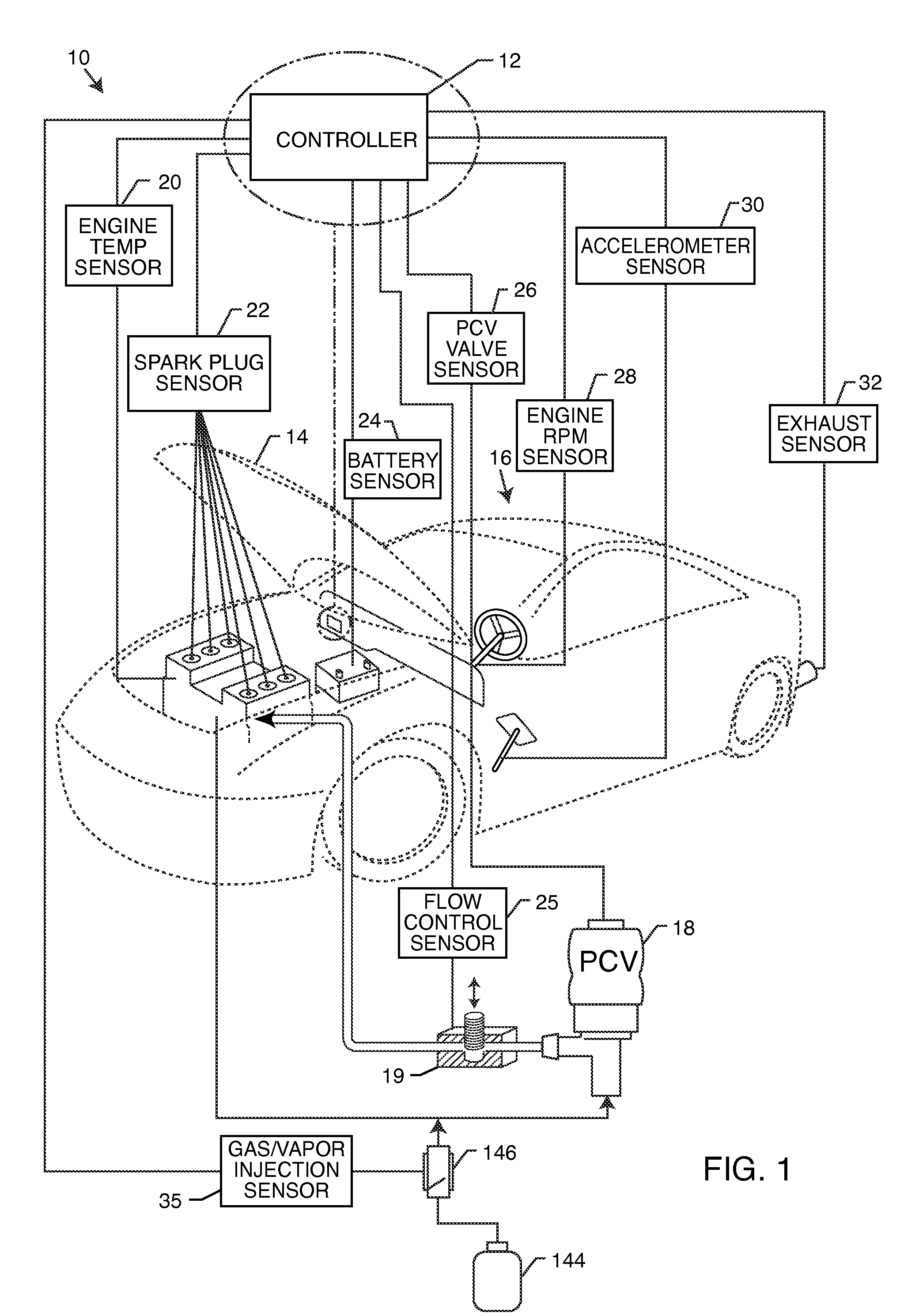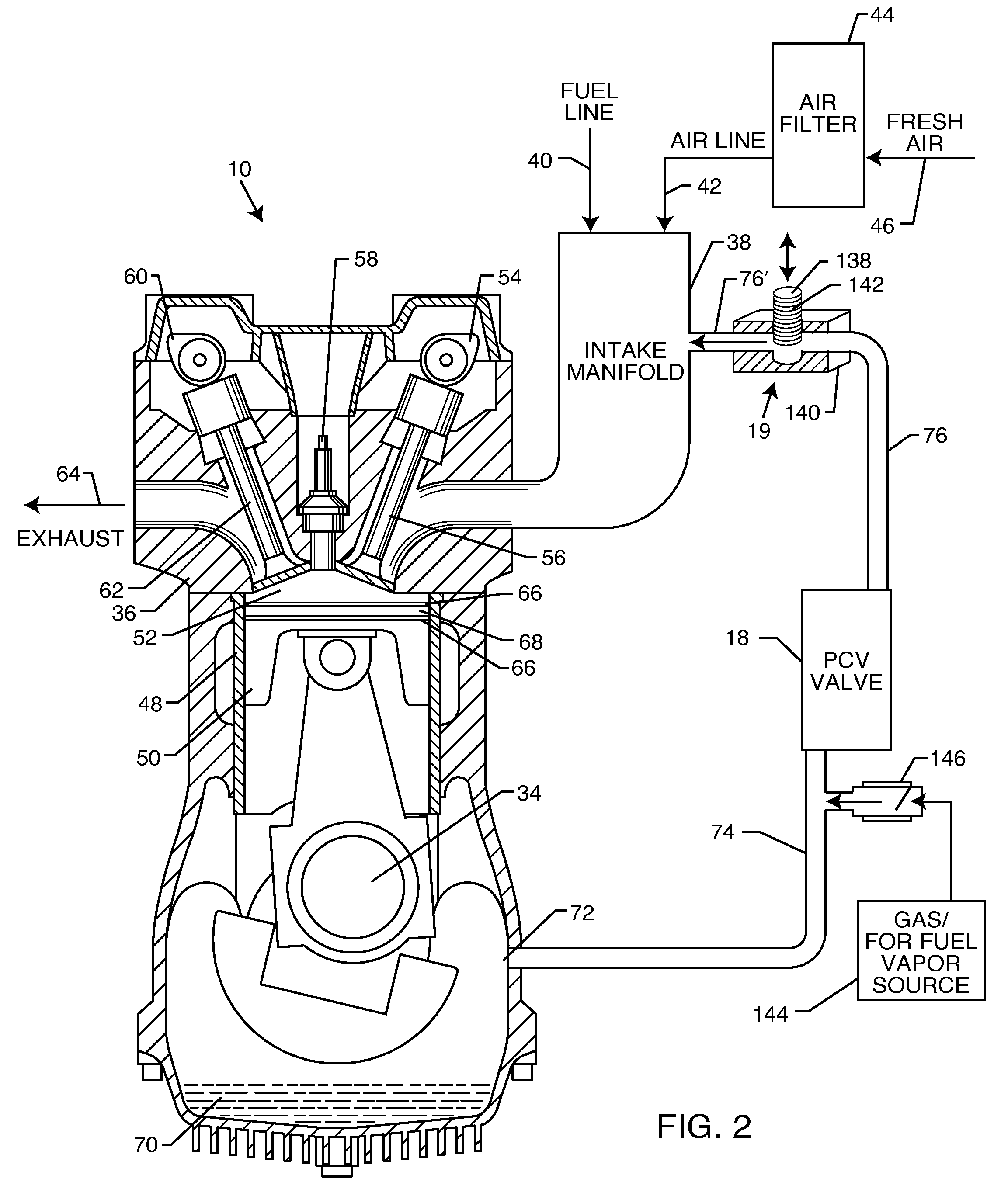Pollution control system
a pollution control and pollution technology, applied in the field of pollution control systems, can solve the problems of harmful to the engine crankcase, inability to completely seal off the piston cylinder, and inability to vent the gases to the atmosphere, so as to reduce the vacuum pressure of the engine, reduce the production of blowby gases, and reduce the fluid flow rate
- Summary
- Abstract
- Description
- Claims
- Application Information
AI Technical Summary
Benefits of technology
Problems solved by technology
Method used
Image
Examples
Embodiment Construction
[0029]As shown in the drawings for purposes of illustration, the present invention for a pollution control system is referred to generally by the reference number 10. In FIG. 1, the pollution control system 10 is generally illustrated as having a controller 12 preferably mounted under a hood 14 of an automobile 16. The controller 12 is electrically coupled to any one of a plurality of sensors that monitor and measure the real-time operating conditions and performance of the automobile 16. The controller 12 regulates the flow rate of blow-by gases by regulating the engine vacuum in a combustion engine through digital control of a PCV valve 18 and a flow control orifice 19. The controller 12 receives real-time input from sensors that might include an engine temperature sensor 20, a spark plug sensor 22, a battery sensor 24, a flow control sensor 25, a PCV valve sensor 26, an engine RPM sensor 28, an accelerometer sensor 30, an exhaust sensor 32, and a gas / vapor injection sensor 33. Da...
PUM
 Login to View More
Login to View More Abstract
Description
Claims
Application Information
 Login to View More
Login to View More - R&D
- Intellectual Property
- Life Sciences
- Materials
- Tech Scout
- Unparalleled Data Quality
- Higher Quality Content
- 60% Fewer Hallucinations
Browse by: Latest US Patents, China's latest patents, Technical Efficacy Thesaurus, Application Domain, Technology Topic, Popular Technical Reports.
© 2025 PatSnap. All rights reserved.Legal|Privacy policy|Modern Slavery Act Transparency Statement|Sitemap|About US| Contact US: help@patsnap.com



